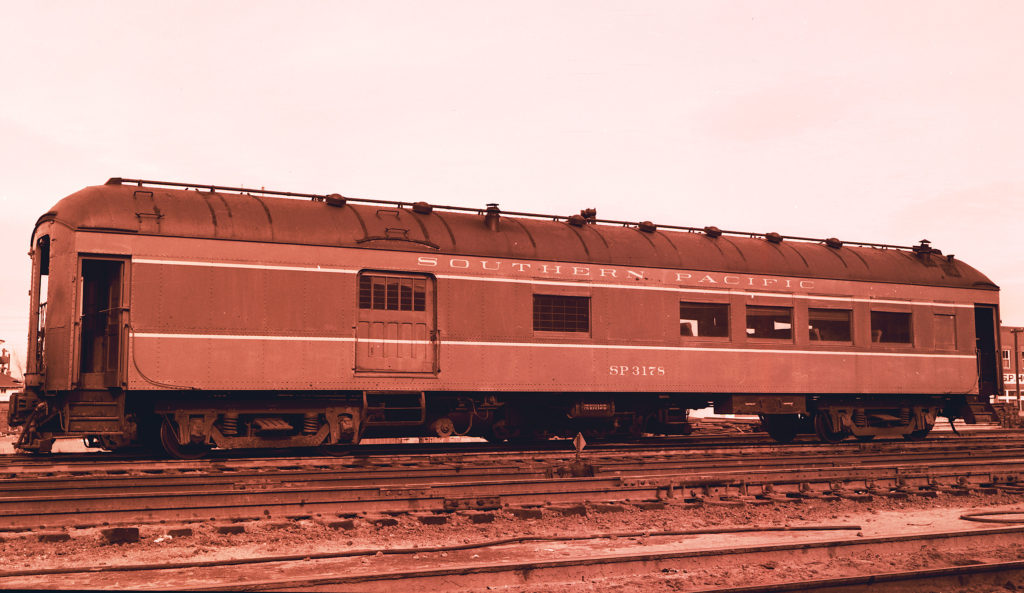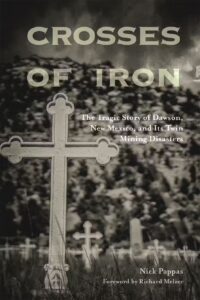SUBSCRIBE!
for updates to my blog
and to my events schedule
The day ‘Polly’ made her final run on the old Dawson branch line

For first-graders from the Forrester Elementary School in Springer, New Mexico, this was no ordinary field trip.
Teachers Genevieve Hoskins and Zella Young had something more imaginative in mind for their young charges that day than a traditional visit to a historical site or museum:
A once-in-a-lifetime opportunity to make some history of their own.
And that’s what they did on Halloween 1962 when they stepped aboard the Southern Pacific’s passenger car – the “Polly” – during its final run on what once had been a 132-mile journey connecting the Dawson coal fields to Tucumcari in northeastern New Mexico.
On this day, the Dawson coal town was a mere memory, shut down by the Phelps Dodge Corp. after 45 years of operation in 1950.
So, too, were the 18 miles of track linking Dawson to French. In March 1952, the Interstate Commerce Commission authorized the Southern Pacific to abandon that section while rejecting its bid to close an additional 44-mile stretch from French to Roy. That’s how things stood until the railroad successfully petitioned the ICC to discontinue the entire line in May 1961.
None of this mattered to the Springer children. They were too busy exploring the “Polly” and getting an up-close look at the diesel engine escorting her on that historic day – an image recorded for posterity by an Albuquerque Journal photographer.
The engineer
Unlike the Springer first-graders, W.G. Boswell needed no introduction to the “Polly” or to the original Dawson Railway Co. branch line.
When the 66-year-old engineer boarded the short train that morning in Tucumcari for its final excursion to French, he already had spent more than two-thirds of his life working that line, first for the El Paso & Southwestern Railroad and later for the Southern Pacific after it acquired the EP&SW in 1924.
He was there in February 1917, his first day as a 21-year-old crew member. He was there as part of the wrecking crew on Oct. 25, 1922, after an out-of-control coal train derailed 2½ miles west of Cabeza, killing an engineer and a brakeman. And, now, he was there as the engineer leading the “Polly” on its final 114-mile journey.
During those years, Boswell witnessed the rise and fall of many communities along the route: Dawson, Colfax, Lloyd, French, Taylor, Abbott, Mills, Roy, Solano, Mosquero, Cabeza, Medio, Campana, Atarque, Canadian, Bascom, and Tucumcari. Fewer than a handful exist today.
“I was the engineer on the last run back from Dawson,” Boswell reminisced to an Albuquerque Journal correspondent as a retired 83-year-old in 1979. “And the section gangs were coming behind me disconnecting the signals.”
When the “Polly” reached its final destination in French that day, Southern Pacific workers tore up one section of rail from each of the tracks to mark the official closing of the 59-year-old line.
The newspaper editor
Boswell wasn’t the only person aboard that day with vivid memories of the Dawson branch.
Karl F. Guthman, former editor and publisher of the Roy Record, first rode the train 54 years earlier, five years after the Dawson Railway made its debut Jan. 17, 1903, by shipping 29 cars of coal to eastern and southern markets.
Guthman purchased the last ticket in Tucumcari for that final trip in 1962.
“In (the early) days, the Pollys were invariably met by a goodly portion of the village population at Roy. The passengers alighted from the coach to walk a block or two to one of the two restaurants. There they could get a home-cooked dinner at a cost of from 31 cents to half a dollar,” he wrote in his farewell account for The Associated Press.
“The stop for a stretch and lunch was of an hour’s duration and this afforded others of different taste – coal miners, cow pokes and homesteaders – ample time to take on refreshers of five-cent mugs of beer or perchance a dime bottle of suds at one of the three saloons in Roy.”
At one time, he recalled, all the stations along the route were manned by a telegrapher-agent and a section crew consisting of five or more workers. On this final run, the only working station was in Roy — and that was to close by day’s end.
Guthman, a former railroad worker who once lived in Dawson, concluded his article by recounting his exchange with the conductor in Tucumcari before boarding for that final run.
First, he presented the conductor with a pass that was issued him in 1918. When informed it was long out of date, he handed the conductor an EP&SW paycheck – also dated in 1918 – worth 5 cents.
“This meagre check, not payment for a full day’s work, was given to me at the time when all rail workers between El Paso and Dawson could draw scrip in advance of payday,” he wrote. “I had been under the impression that all of my earnings had been drawn, but I found by the check on payday that I had missed my guess by five cents.”
Crosses of Iron
by Nick Pappas
Now available to order from:
University of New Mexico Press
… and other booksellers.
Audiobook version available to order from …
… and other audiobook sellers.

